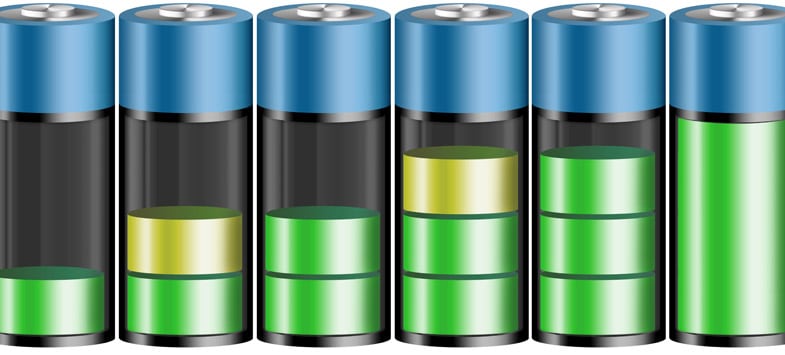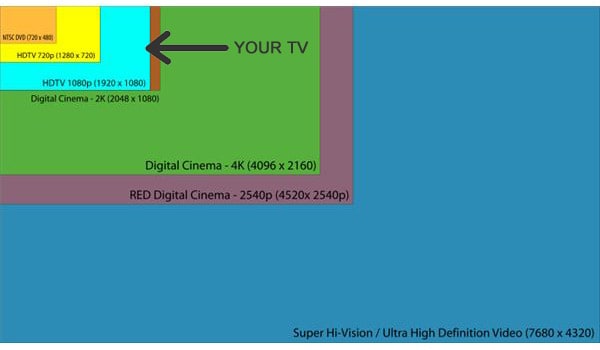Sorry, no flying cars here or future predictions of quantum computing. Instead, let’s conduct an earthbound thought experiment; one that looks 30 years into the future. Let’s peer down the rabbit hole and consider a real-life scenario of the devices we will carry, how they interact with us and each other, and what they’d be used for.
Most of us carry around a smartphone and in the future, this will be no different. The “phone” part of the name, even today, is just a small part of the device’s capability so it’s really a poor description of what the device does.
Our device is a handheld computer used not just for voice communication, but also for data transfer, gaming, recording life’s moments through photos and videos, watching television, listening to music and radio, alarm clock to wake us up every morning, maps to help us travel, heck, most of us even use it as a flashlight to illuminate the hallway at 3AM.
Fundamentally, it’s an information hub where all our data, entertainment and communications flow through.
How about we call our futuristic device an iHub. It will be the smart device that controls all other dumber devices we own.
To think about digital devices of the future, I think we first need to consider 2 main problems.
1. Power
2. Connection
How Will Devices Of The Future Be Powered?
Put your hand up if you’re sick of plugging your device into a wall or computer to charge it? Soon enough, this will seem as foreign as TV remotes with wires.
Although battery capacity will vastly improve in the next 30 years, they will still need the occasional charging. But I doubt it would be a hassle, or that you’d even *know* the device is charging.
“What the … ” I hear you say.
Inductive charging is a relatively new technology but has already been in the mainstream for several years, such as the PowerMat.
In the future, inductive charging technology will be embedded in all device’s batteries. I also presume the mat itself would become a lot thinner and even transparent. That means, you could essentially have a sheet of transparent plastic laying on your kitchen bench and every time you set your device down, it begins charging.
Your office desk may even have inductive charging built right in to the surface so that every device around you is fully powered up.
That’s not all. If you catch public transport – bus, train, tram, ferry – all will come equipped with inductive charging technology built into the hand rails. Just hold your device there for a minute or two to juice it up.
Batteries Of The Future

Recent advances in Lithium Ion batteries have been shown to deliver far more power than anybody thought possible at 30 times greater than today’s Lithium Ion batteries of the same physical size and also making charging 1,000 times faster.
Just a few minutes on the inductive charging kitchen bench should power up your iHub for days, if not weeks.
In 30 years, it’s not hard to imagine that continuing breakthroughs using nanotechnology will increase battery capacity a further 10 times to achieve 300 times greater than today’s Lithium Ion.
Charging time would also be reduced significantly, perhaps to the point where the latest tech devices would be promoted as “fully charged in under a minute”.
How Will Devices Of The Future Be Connected?
Isn’t it obvious? The Internet of course! D’uh!
But that’s not what I’m getting at. Let’s use my printer as an example. It is connected to my home Wi-Fi so that my laptop and desktop can print to it. If I was resourceful enough, I could get it to print when I’m not even home.
But it relies on my home Wi-Fi, and the Wi-Fi relies on ADSL. Essentially, the printer is disconnected and “dumb” without those 2 required connections.
Let’s imagine a home of the future. We don’t have Wi-Fi. We don’t have ADSL. They’re not required.
The current mobile carriers are building the next generation networks running on LTE, that is about 10 times faster than the older 3G technology. While LTE is the 4th generational mobile technology, in our future 30 year hence, we’d be into the 8th generation (presuming a 7 year technology cycle).
The 8th generation mobile networks would have already overcome the issues of delivering high enough speeds to satisfy our demands – more than 10,000 times faster than today’s networks – while also using power efficiently.
The more pressing issue would be overall capacity – the number of “channels” that can be squeezed into the available bandwidth.
In our future homes, we’ll have a printer. Not just to print on paper, but to print 3-dimensional objects. This reality is a lot closer than you think.
In our future scenario, we’ll be able to buy these printers for just a hundred dollars from the local bricks and mortar store (yes, we’ll still have those in 30 years).
The proof of purchase is sent to our iHub receipt repository which also stores a unique identifier connecting our iHub to the printer’s serial number.
All we have to do to set up the printer when we get home is unpack it and put it on our inductive charging desk, hold our iHub next to it, type in a password and claim the device as our own (we could have done this in the store at point of sale). It’s pre-configured and connected to the 8G mobile network like all our other devices. It’s always connected, permanently.
The printer asks (in actual audible words) if we’d like to do a test print and we agree by saying “yes”. It prints out a kitschy keyring with the device maker’s logo.
Our printer and every other electronic device being manufactured would have a mobile chip, it’s own unique internet address, and be running standardized protocols for interacting with our iHub device.
This is the “internet of things”. Some devices would even be aware of each other and automatically configure to work together, say, from the same manufacturer.
Talking Devices
Speech recognition has come a long way with the most popular PC and Mac software Dragon NaturallySpeaking is made by the same company behind Siri (purchased by Apple).
Even now, with Dragon NaturallySpeaking you can simply talk to your computer and it will browse the internet, take dictation and open up software for you, amongst other things, all hands-free.
Devices that are not your primary iHub device could be considered peripheral devices, such as your printer, the kitchen kettle or the little space heater in your guest bedroom.
Not only will peripheral devices of the future be able to understand what you are saying, but they will be able to reply to you audibly. “Kettle, Turn on”, “Heater, make the temperature higher”. I suspect some of these devices would still have screens (like the printer), but a lot of them will not.
These peripheral devices will also be able to communicate, via 8G, to your iHub. I’m not going to guess whether email will still be widely used in 30 years (please let email die), or a service like Twitter or Facebook. Either way, your peripheral devices will be able to message you on whatever platform you prefer to use.
A peripheral device laying in your desk draw for a few months may send you a notification such as:
Hey, you haven’t used me since May 12th, 2039, and only three times since you got me. My battery is running low at 20%. My location is shown on [this map]. I have researched some options for you.
- Re-charge my battery, or
- Sell me [second-hand market rate, based on my condition is USD$44.50], or
- Gift me to [Jim Brewer (colleague), Frankie (brother), Mom (mother), more…], or
- Ignore this notification. [ignore this time, ignore forever]
TV over Mobile Data

Out of all the peripheral devices we’d have lying around the house, the one on your wall will be the second smartest of the lot. That is, your television.
You’d be able to screenshare your iHub to your television, stream movies to and from the TV, use your iHub as a remote, a gamepad and anything else necessary. The TV wouldn’t be sold with a remote. The TV would come complete with the standard 8G mobile protocol.
Here’s the kicker for my future predictions.
Your TV will not rely on cable, ADSL or traditional broadcast signals. It will use the 8G mobile network to receive and send video. It won’t be a one-directional viewing device. It will be a large version of your smartphone/iHub. Bi-directional communication.
It will receive 3D Ultra high-definition video streams. The resolution is enormously higher than the standard HDTV’s we now own, making the picture crystal clear with pixels smaller than the eye can see.

Let’s hope by then 3D has done away with the glasses.
Traditional cable networks should not be shaking in their boots though as there will probably be a merging of telecom companies with content providers. TV over Mobile is already starting to take shape and will long be available before our 30 year future has taken it’s course.
Disclaimer: Links to 3rd party sites included within this article denoted with /go/ in the URL may result in commission being earned if you decide to make a purchase.
Posts related to Future Predictions Of The Mobile Internet
The Best Alternative To Dropbox For Cloud File Sharing Why Responsive Web Design Is The Hot Trend Right Now
Why Responsive Web Design Is The Hot Trend Right Now How To Use Bitcoin QR Codes
How To Use Bitcoin QR Codes 5 Microsoft Office Alternative Packages You Can Use For Free
5 Microsoft Office Alternative Packages You Can Use For Free
Tags: future predictionsInternet Of The Futureinternet of thingsmobile internetwireless internet
